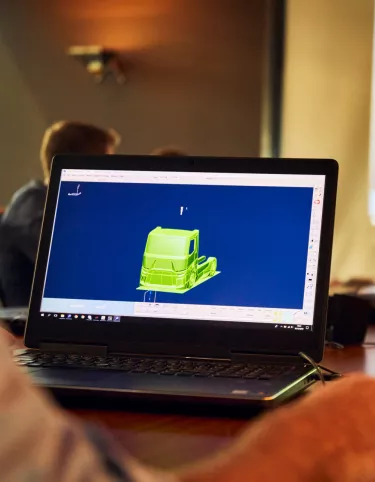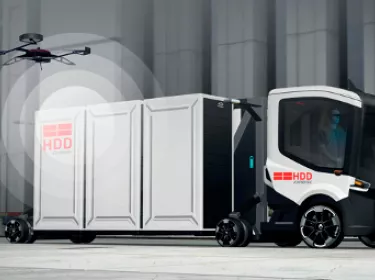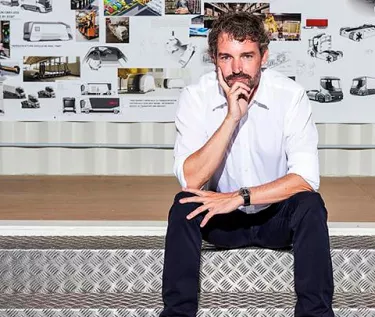Welcome to Renault Trucks UK
Report
Design: the electric truck revolution
Electromobility
Green Energies
Mar. 24 2021

Paul Daintree is Design Director at Renault Trucks. With his team of 20, he envisions and forecasts what tomorrow’s electric trucks will look like. Revolutionary not only in its look, but also in its architecture, the HDD Express marks a clean break with the past through design that puts connectivity, range and eco-credentials first.
“I joined Renault Trucks France as lead interior designer at Lyon Saint-Priest in September 2006. Since then - and even before that when I was with Volvo Trucks North America and Nissan Motors - I've always been convinced that the truck design has nothing in common with car design. A truck is a working tool, not a lifestyle choice. And that’s the perspective you have to look at it from.
I’m designing the electric trucks of 2030
I’m convinced that the structure of today’s electric truck is completely outdated, because it’s much too closely modelled on that of the conventionally electric powered trucks of the past. It falls short of exploiting all the possibilities offered by e-mobility technologies and the compact size of the latest batteries. So my team and I began with a blank sheet when we set out to envision the electric truck of 2030 completely free of restrictions. As a result, the HDD Express is an entirely new architectural concept for urban e-mobility. It has absolutely nothing in common with any traditional truck!

We saw it as about envisioning a response that would break with what we know and have today, but one that was adapted to the future needs of cities for goods distribution and delivery. Our response prioritised not only connectivity, range and eco-credentials, but also the safety of delivery drivers, their comfort and the convenience of local residents.
Pollution-free, quiet and safe night-time deliveries
Rather than locating the traction power batteries at the front of the vehicle, as is the case in today’s chassis, we wondered if it would be possible to distribute electric traction throughout the full length of this new vehicle. So now, the HDD Express has a particularly compact traction and steering module. This allows the driver to use a Segway®-type system. There’s no physical connection with the trailer or trailers, which are driverless. The floor of each trailer contains batteries powerful enough to transport goods - 100% autonomously - inside automated warehouses.
I’m convinced that this principle of driverless trailer platooning - trailers not physically connected to the traction unit - will develop over the next decade. It provides an effective response to high demand from urban centres that want silent, non-polluting and safe vehicles for night-time deliveries with the highest-possible degree of automation..
The plan is that the HDD Express will eventually replace trucks carrying loads of between 3.5 and 10 metric tonnes - depending on the number of trailers connected to the tractor module - but the concept could ultimately be adapted to handle larger loads. But whatever the ultimate outcome, we previewed the vehicle concept to more than 400 Renault Trucks customers in 2019, and every one of them was enthusiastic about it..
I can promise you that we’re far from done in exploring all the possibilities of e-mobility for urban environments!”
Bio
Paul Daintree is a graduate of Leeds University. Having graduated with a BA in Product Design in 1996, Paul began his career in the automotive industry, and has never left it. Before joining the Renault Trucks Design Hall in 2006, he had previously worked at Nissan Motors and Volvo Trucks. He is the designer behind the T, C and K ranges unveiled in 2013. He was appointed Design Director at Renault Trucks in March 2019.
